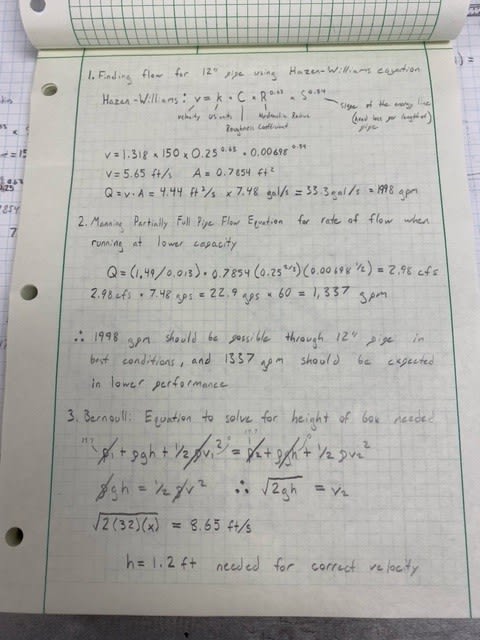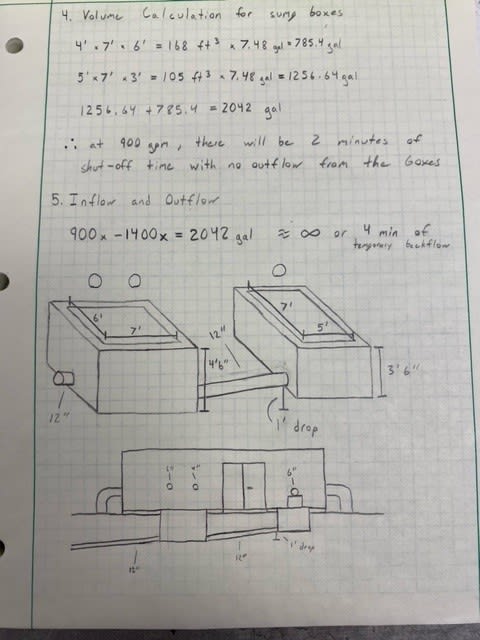fyrefreezer
Civil/Environmental
How can I translate the height of water in a box to the velocity needed for a water to enter a pipe? Assuming all this work is being done by gravity, no pumps.
I have came to the conclusion of the Bernoulli Equation to get sqrt(2*g*h) = v^2
Would this actually be able to translate into the velocity that the water is moving? How could I find the velocity I would need to enter the pipe in the first place?


I have came to the conclusion of the Bernoulli Equation to get sqrt(2*g*h) = v^2
Would this actually be able to translate into the velocity that the water is moving? How could I find the velocity I would need to enter the pipe in the first place?


